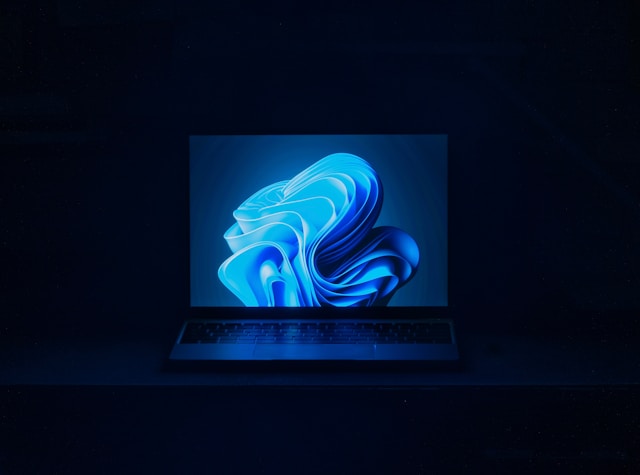Modern PCs rely on USB ports for almost everything, from connecting keyboards and mice to transferring files across external drives. With the arrival of USB 3.0, data transfer speeds became significantly faster compared to USB 2.0, making it the standard for most devices today. But to take full advantage of these benefits, your system needs the correct drivers. If the drivers are missing, outdated, or corrupted, you might face issues such as devices not being recognized or slower performance. This guide explains how to install USB 3.0 drivers on Windows 11, update them when necessary, and fix common problems.
Why USB 3.0 Drivers Matter on Windows 11
Drivers act as a bridge between your hardware and operating system. USB 3.0 drivers ensure that Windows 11 communicates correctly with your USB ports. Without them, your ports may still function, but performance will be limited and stability can suffer. You may notice:
-
External drives transferring data much slower than expected.
-
USB ports not recognizing plugged-in devices.
-
Errors in Device Manager related to USB controllers.
Installing or updating USB 3.0 driver for Windows 11 is often the solution to these problems.
When Should You Install or Update USB 3.0 Drivers?
While Windows 11 usually installs generic USB drivers automatically, there are situations where a manual update or reinstall is required:
-
After upgrading from Windows 10 to Windows 11 and USB ports stop working.
-
When certain devices (printers, external hard drives, flash drives) aren’t detected.
-
If you see yellow warning icons in Device Manager under “Universal Serial Bus controllers.”
-
When file transfers are slower than USB 3.0’s advertised speed.
If you encounter any of these issues, it’s time to check your drivers.
Methods to Install USB 3.0 Drivers on Windows 11
There are several ways to install or update USB 3.0 drivers, depending on your preference and whether you want Windows to handle it automatically or download the drivers yourself.
1. Install via Windows Update
The simplest method is through Windows Update. Microsoft frequently pushes updated drivers alongside system updates.
-
Open Settings → Windows Update.
-
Click Check for updates.
-
If a driver update is available for USB controllers, Windows will download and install it automatically.
This ensures you always get a version optimized for Windows 11.
2. Update Through Device Manager
Device Manager is another built-in way to update or reinstall drivers:
-
Right-click the Start Menu and select Device Manager.
-
Expand Universal Serial Bus controllers.
-
Right-click your USB 3.0 controller (such as “Intel USB 3.0 eXtensible Host Controller”) and choose Update driver.
-
Select Search automatically for drivers to let Windows find the latest version.
If Windows can’t find one, you can choose Browse my computer for drivers and install a file downloaded from the manufacturer’s website.
3. Download from Manufacturer’s Website
Sometimes the best performance comes from using official drivers provided by your hardware vendor. Depending on your system, this could mean downloading drivers from:
-
Your PC or laptop manufacturer’s support page (e.g., Dell, HP, Lenovo).
-
Your motherboard manufacturer if you built a custom desktop.
-
Intel or AMD if your chipset uses their controllers.
Once downloaded, simply run the installer or update manually through Device Manager.
Troubleshooting Common USB Driver Issues
Even after installing USB 3.0 drivers on Windows 11, some users may still run into problems. Here’s how to resolve the most common ones:
-
USB ports still not working: Uninstall the driver in Device Manager by right-clicking the USB controller and selecting Uninstall device, then restart your PC. Windows will reinstall the default driver.
-
Device not recognized: Try different USB ports to confirm if it’s a port-specific issue. If all fail, reinstall drivers or check hardware.
-
Frequent disconnects: Ensure power management settings aren’t turning off USB devices. Go to Device Manager → USB controller properties → Power Management tab, and uncheck “Allow the computer to turn off this device to save power.”
Best Practices for USB 3.0 Driver Maintenance
To avoid recurring issues, follow these practices:
-
Keep Windows 11 updated regularly so you always receive the latest USB fixes.
-
Use official drivers whenever possible instead of random third-party tools.
-
Periodically check Device Manager for warnings or missing drivers.
-
For heavy external drive users, ensure your system is using the correct USB 3.0 ports, usually marked with blue connectors.
Final Thoughts
Knowing how to install USB 3.0 drivers on Windows 11 ensures that your PC runs smoothly and takes advantage of faster transfer speeds and stable device connections. Whether you rely on Windows Update, Device Manager, or manufacturer downloads, keeping these drivers up to date is essential for productivity and performance. By following the steps in this guide and applying troubleshooting tips when necessary, you’ll avoid common USB issues and maintain a reliable Windows 11 experience.









